It’s often thought that an artist’s stroke is the purest way to perceive their abilities. As a line winds across a paper or canvas, this continuous band can emit powerful emotions. Thus, it’s no surprise that line art, or line drawing, is one of the most basic elements of visual art.
Listen beautiful relax classics on our Youtube channel.
In fact, as one of the seven visual elements of art—along with form, shape, color, value, texture, and space—the line is a hallmark of the arts. But what is line art? First, it’s important to note that a line doesn’t simply move from point A to point B. At its core, line drawing consists of distinct lines against a primarily solid background. In art, a line can be two-dimensional or three-dimensional, abstract, descriptive, or implied.
Line art is often black and white, but not always. Elements like shading and color gradients are absent, allowing the focus to rest firmly on the lines themselves. Line drawings can be sketches, but they can also be finished artworks unto themselves. The line is so fundamental to the arts, that a common exercise for art students is to draw a form using one single line, never letting the drawing utensil leave the page.
It’s important to remember that line art isn’t only about painting and drawing. Lines can be visually formed in many ways. For instance, sculptors bending materials into different shapes or photographers creating implied lines via the angle of their camera.
Now that we know a bit about the theory, let’s dive into line art through history, beginning with famous line drawings in art history.
Throughout art history, artists have created influential art using the line as a principle means of visual expression.
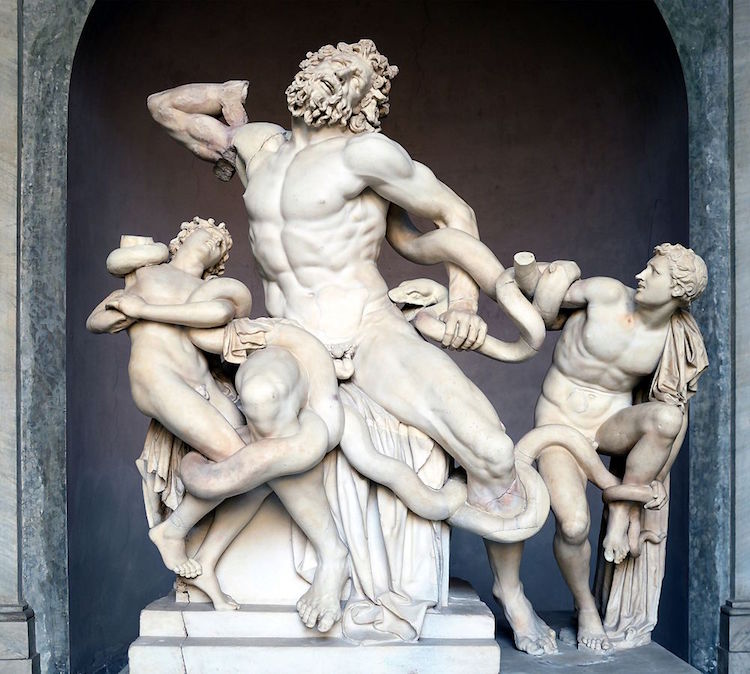
Laocoon and His Sons. Marbles. Between 27 BC and 68 AD. (Image via Wikipedia)
The ancient sculpture group Laocoön and his Sons, which is now in the Vatican Museums in Rome, has been influential since it was rediscovered in the 1500s. It became a point of reference for Renaissance artists, who looked to how the sculptor used fluid lines to harmonize the group of figures. The curving snake winds its way through the three characters, connecting them and balancing out the group. Artists from the period would continue to use implied lines to create harmonious compositions in sculpture, painting, and drawing.

Leonardo da Vinci. Study for the head of Leda. c. 1505-1507. (Image via The Drawings of Leonardo)
Leonardo da Vinci was a gifted draughtsman—among his other talents. His sketches became prized art pieces in and of themselves. This study for a painting of Leda and the Swan shows detailed line work used to build up form and dimension.
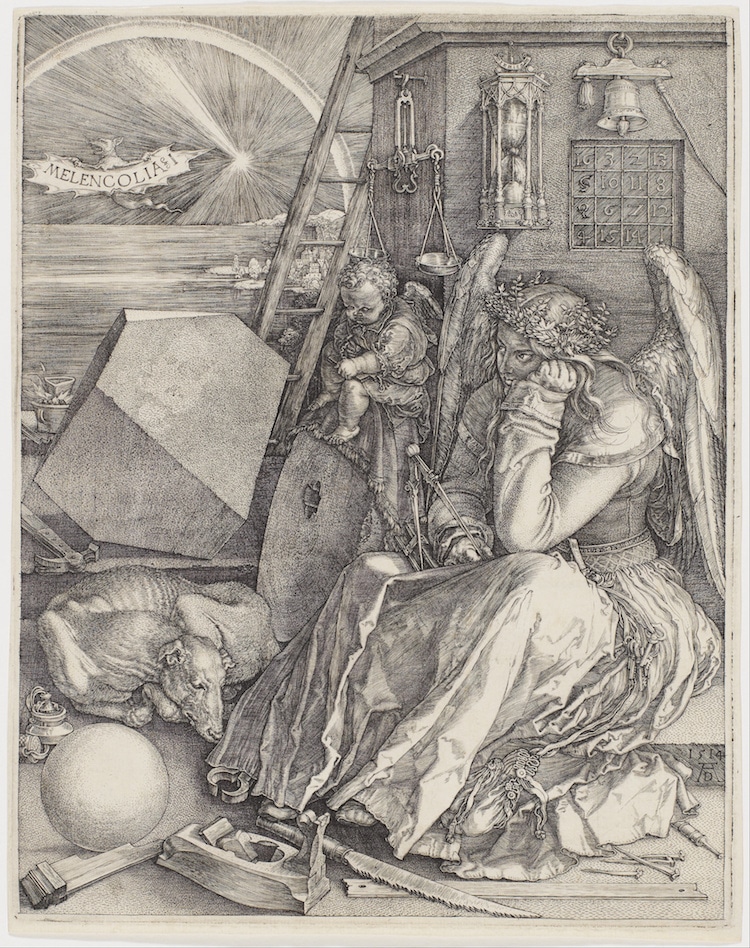
Albrecht Dürer. Melancolia I. Engraving, 1514. (Image via Wikipedia)
One of the most famous printmakers in history, Albrecht Dürer is a true master of the line. Incising precise lines into plates, Dürer produced rich, complex engravings that continue to influence artists. He was also a skilled painter in both oil and watercolor, as well as an accomplished draughtsman. His work in all media relies on the line work his printmaking is known for.
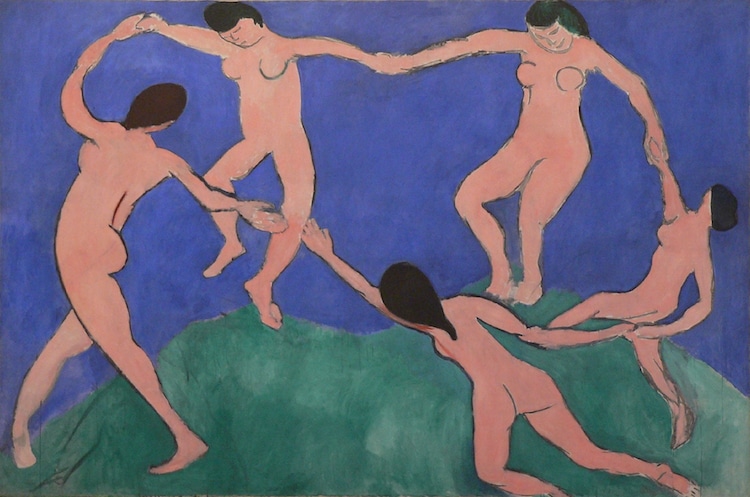
Henri Matisse. The Dance. Oil on canvas. 1909. (Image via Wikipedia)
Increasingly throughout his career, Henri Matisse incorporated the quick, expressionistic touch of his drawings into his paintings. One of his most famous pieces, The Dance, relies heavily on the contours he created. With bold, flat colors and striking outlines, viewers perceive the power and movement of the dancers through Matisse’s lines.
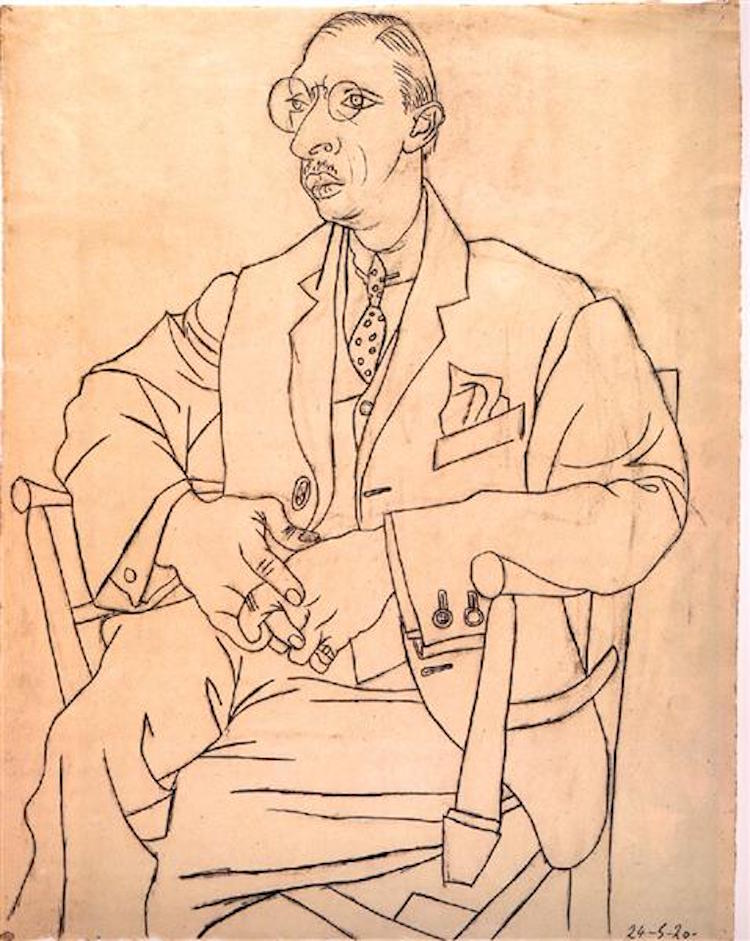
Pablo Picasso. Portrait of Igor Stravinsky. 1920. (Image via WikiArt)
Moving from the more articulated, classical drawings he produced early in his career, Pablo Picasso stripped down his work to produce a wealth of clean, simple contour drawings. Using a single, continuous line, he’s still able to express power in his work. In fact, these contour drawings have become some of his most iconic images.

Jackson Pollock. No. 5, 1948. Oil on fiberboard. 1948. (Image via Jackson-Pollock.org)
The king of abstract expressionism, Jackson Pollock’s work is entirely based on the dripping lines of liquid paint that move dynamically across his paintings. His most famous works were created during his “drip period” from 1947 to 1950, when he turned the contemporary art world on its ear with this innovative technique.

Bridget Riley. Blaze. Screenprint. 1964. READ MORE: Art History: The Evolution of Hypnotic Kinetic Sculptures
British artist Bridget Riley was a pioneer of Op art, which relies on optical illusions. Interested in geometric forms, her use of bold lines helped create hypnotic visual illusions in her work.
Listen beautiful relax classics on our Youtube channel.

Keith Haring. Red Hot + Dance. Album cover art. 1992. (Image via Widewalls)
Keith Haring’s bold style is defined by thick black outlines, often left in black and white or filled with bright, flat color. His signature style defined his career and made his work instantly recognizable. Whether the figures were intertwined, seemingly following one flowing line, or were defined on their own, Haring’s contour drawings continue to live on today and show continued influence to fine artists, illustrators, and graphic designers.
Today, lines are as important as ever in contemporary art. From sculpture to painting, the tradition of line art continues through the work of cutting-edge artists.
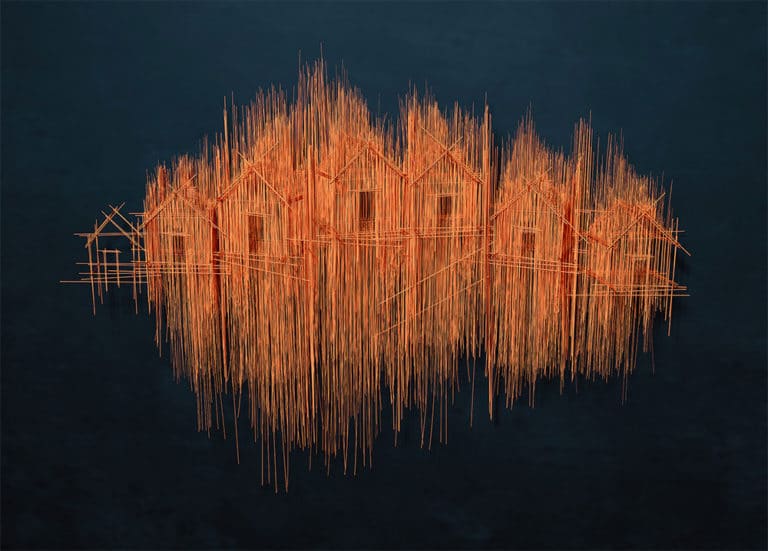
David Moreno. READ MORE: Surreal Architectural Sculptures Mimic the Hectic Lines of Quick Pencil Sketches
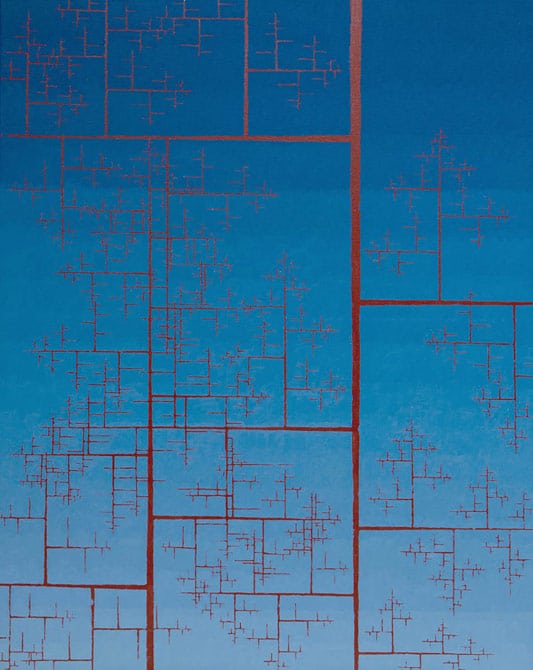
Bruce Pollack. Up and down. Oil on linen. (Image via the artist)

Liliana Porter. Blue Drawings. Drawing and collage on paper. 2007. (Image via the artist)

Hong Chun Zhang. Life Strands. Charcoal on paper. 2004. (Image via the artist)
Want to learn how to do a continuous line drawing? Check out this excellent art tutorial.
The post Art History: What is Line Art? appeared first on My Modern Met.
Source: mymodernmet.com
